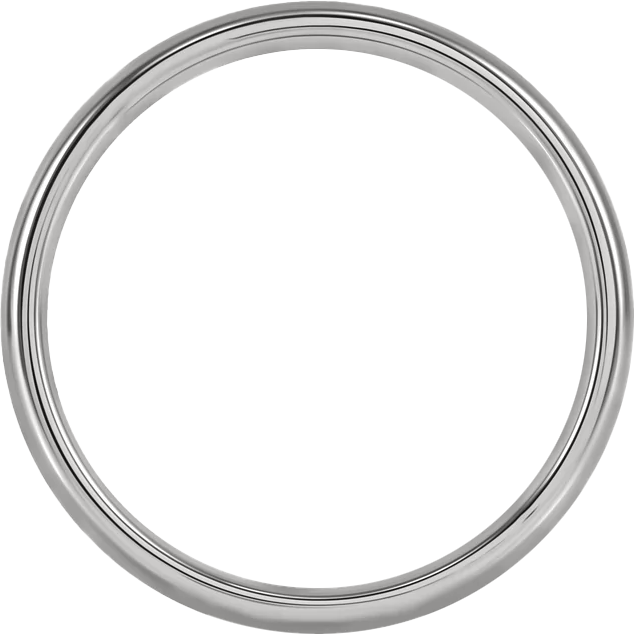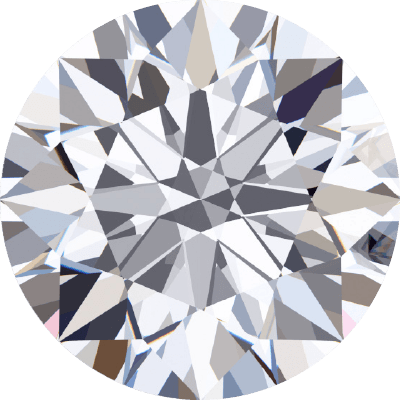




Are you considering purchasing a 6 carat round diamond? Before you buy, this article will help you understand the ideal proportions for this diamond and show you how it would look in a ring on your finger.

Example round diamond

Actual size
| Shape | Round |
|---|---|
| Weight | 6 carat (1.2g) |
| Dimensions | 11.81 x 11.81 x 7.12 mm |
| Depth | 60.3% |
| Length/Width Ratio | 1 |
| Face Up Area | 109.54 mm2 |
| Check price → | |
This diamond is well proportioned and looks like its carat weight.
Using the tool below you can see how big this 6 carat round diamond will look on a ring worn on your finger. You can modify the settings to get the right skin tone, ring size, and type to give you a good idea of how the diamond will look on your finger.
Make sure to check your screen size setting is correct to make the tool as accurate as possible.





A lot of buyers want to see how the diamond they are considering will look on their finger. We've made it easy so that you don't need to trace from your screen!
Just click the button below to print only the diamond and a ring outline, cut it out, and see how it fits!
The face up area is the area of the diamond that is visible when viewed from the top, usually when set in a ring, and when comparing diamonds it is very useful to know how big the stone will look from the top, and whether this is in proportion to its carat weight.
The face up area for this 6 carat round diamond is 109.54 mm2. This matches exactly the proportions of the ideal 6 carat round diamond with the same length, width and depth.
While it's true that diamonds are sold by weight, the face up area is very important because the weight of a diamond does not equally translate to the physical size. This means that two diamonds of the same weight can have very different spread, or face up area, and appear to be different sizes.
Since a diamond is most often set in a ring, you will only really see the face up area from the top, so it needs to be as perfectly proportioned as possible to have the best light performance.
The face up area for this diamond is within the normal range for a 6 carat round with ideal proportions, so it looks the size you would expect.
One of the most important factors in determining the light performance of a diamond is the depth. The depth is the distance from the table to the culet, and is measured as a percentage of the length of the diamond.
When a diamond is cut too deep or too shallow, it allows light to leak out of the stone, which reduces the brilliance and fire of the diamond.
The recommended depth for round diamonds is between 58% and 62.5%.
The depth of this 6 carat round diamond is 60.3%, which is within the correct depth proportions.
The calculations and numbers on this page are done using a 6 carat round diamond with the following proportions:
| Depth | 60.3% |
|---|---|
| Table | 57% |
| Crown Angle | 34° |
| Pavilion Angle | 40.7° |
| Girdle Thickness | 2.8% |
| Star Length | 50% |
| Lower Half | 80% |
| Length/Width Ratio | 1 |
When calculating if a given round diamond has an adequate face up area, we determine any diamond within 5% lower and 3% higher of the ideal round diamond is adequate.
The correct length to width ratio for round diamonds is between 1 and 1.02.
If you want to make sure you are purchasing the best 6 carat round diamond for your money, then you can consider the following criteria, in addition to the proportions calculations we have already covered in this article.
The choice of ring will determine which color of round diamond will look best in it. The color of a diamond is graded on a scale of D to Z. The full scale is:
For a platinum or white gold solitaire ring, go with J, or if you prefer a yellow gold solitaire ring, choose K.
For a round brilliant diamond, the cut is very important because it gives the stone it's "wow" factor. The cut of a round brilliant diamond is graded on a scale of Excellent to Poor. The full scale is:
We recommend that you only choose a diamond with a Very Good or Excellent cut grade to make sure you get the best value for money.
The clarity of a diamond refers to the number and size of inclusions in the diamond. Inclusions are tiny flaws that are present in all diamonds, and they are what give each diamond it's unique character.
The clarity grading will tell you how many inclusions are present in the diamond, and how visible they are to the naked eye.
Graded by the GIA, the clarity scale is as follows:
Our recommendation for round diamonds is to choose a diamond with a SI2 clarity grade or higher.
A very common technique used when buying a diamond is to buy a diamond just shy of a full or half carat. For example, if you are looking for a 1 carat diamond, you might buy a 0.9 or 0.95 carat diamond instead. If you're looking at a 1.5 carat stone, then maybe look to buy shy and consider 1.4ct instead.
The price of diamonds jump at full- and half-carat weights, so buying shy can save you a lot of money and the difference in size is barely noticeable if you stick within 3-7% of the target carat weight.
Earlier in this article, we discussed the cut parameters for the ideal 6ct round diamond. To help you make a better decision on the cut of your diamond, you can use the parameters below to figure out whether a particular round diamond is worth considering.
The gold standard for professional and unbiased diamond characteristic assessments is the Gemological Institute of America (GIA). The GIA is the world's foremost authority on diamonds and gemstones, and they are the most trusted source for diamond grading reports.
Another well-trusted diamond grading lab is the American Gem Society (AGS). The AGS is a non-profit organization that was founded in 1934, and they are dedicated to educating consumers about diamonds and gemstones.
Now, a certificate is not 100% reliable, but is still essential to have when considering a purchase of any diamond. Put simply, if a diamond is not certified by GIA or AGS, then it is almost guaranteed to be a lower quality diamond.
We recommend that you only consider diamonds that are certified by the GIA or AGS to ensure you get a high-quality stone.
The term "eye clean" refers to a diamond that has no visible inclusions under 10x magnification. In other words, the diamond is completely free of inclusions that can be seen with the naked eye.
If you are able to see inclusions with the naked eye, then the diamond is not eye clean and you should not consider it for purchase unless you know what you are doing.
A lot of diamond purchasing is now done online, and this means you get access to a lot more stones than you would if you were shopping in a brick-and-mortar store. However, this also means that you have to rely on photos to make your decision.
Always review high quality photos, videos, or 360° views of the diamond you are considering. If the photos are not high quality, then you should not consider the diamond.
We've covered a lot of information about what to look for in round diamonds, but there are also some red flags that you should be aware of when buying a diamond. Make sure to consider the list below when evaluating a diamond to make sure you get the quality you are paying for.
In this article, we've covered a lot of information about round diamonds, and this 6ct diamond in particular, and we've also provided you with a lot of resources to help you make a better decision when buying a diamond.
Hopefully, you feel more confident about buying a diamond now, and you can use the information in this article to help purchase the perfect diamond or diamond ring for you.
